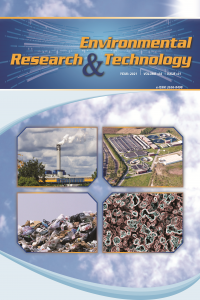Abstract
References
- Dr Funsho Babarinde Department of Mechanical Engineering, Federal Polytechnic, Ilaro, Ogun State, Nigeria. funsho.babarinde@federalpolyilaro.edu.ng
- Dr Oluwatosin Komolafe Institute of Ecology and Environmental Science, Faculty of Science, Obafemi Awolowo University, Ile-Ife, Nigeria. komolafeolaoluwa@ymail.com
Reducing greenhouse gas emissions from solid wastes management in north eastern Nigeria: An integrated solid waste management approach
Abstract
Keywords
Carbon footprint composting greenhouse gases incineration integrated solid waste management municipal solid waste management
References
- Dr Funsho Babarinde Department of Mechanical Engineering, Federal Polytechnic, Ilaro, Ogun State, Nigeria. funsho.babarinde@federalpolyilaro.edu.ng
- Dr Oluwatosin Komolafe Institute of Ecology and Environmental Science, Faculty of Science, Obafemi Awolowo University, Ile-Ife, Nigeria. komolafeolaoluwa@ymail.com
Details
| Primary Language | English |
|---|---|
| Subjects | Environmental Engineering |
| Journal Section | Research Article |
| Authors | |
| Publication Date | March 31, 2021 |
| Submission Date | December 7, 2020 |
| Acceptance Date | January 4, 2021 |
| Published in Issue | Year 2021 Volume: 4 Issue: 1 |

